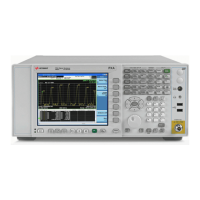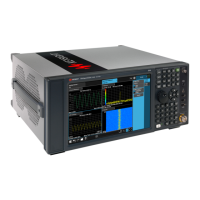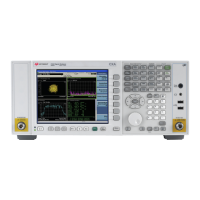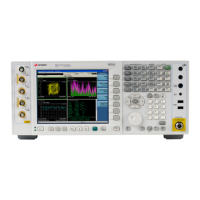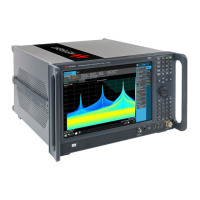200
Concepts
Time Gating Concepts
Gated video concepts
Gated video may be thought of as a simple gate switch, which connects the signal to
the input of the signal analyzer. When the gate is “on” (under the Gate menu) the
gate is passing a signal. When the gate is “off,” the gate is blocking the signal.
Whenever the gate is passing a signal, the analyzer sees the signal. In Figure 15-8
notice that the gate is placed after the envelope detector and before the video
bandwidth filter in the IF path (hence “gated video”).
The RF section of the signal analyzer responds to the signal. The selective gating
occurs before the video processing. This means that there are some limitations on the
gate settings because of signal response times in the RF signal path.
With video gating the analyzer is continually sweeping, independent of the position
and length of the gate. The analyzer must be swept at a minimum sweep time (see the
sweep time calculations later in this chapter) to capture the signal when the gate is
passing a signal. Because of this, video gating is typically slower than gated LO and
gated FFT.
Figure 15-8 Gated Video Signal Analyzer Block Diagram
Gated LO Concepts
Gated LO is a very sophisticated type of time gating that sweeps the LO only while
the gate is “on” and the gate is passing a signal. See Figure 15-9 for a simplified
block diagram of gated LO operation. Notice that the gate control signal controls
when the scan generator is sweeping and when the gate passes or blocks a signal.
This allows the analyzer to sweep only during the periods when the gate passes a
signal. Gated LO is faster than Gated Video because Gated Video must constrain
sweep time so that each point is long enough to include a burst event. On the other
hand, when in Gated LO, multiple points may be swept during each gate.
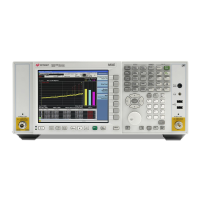
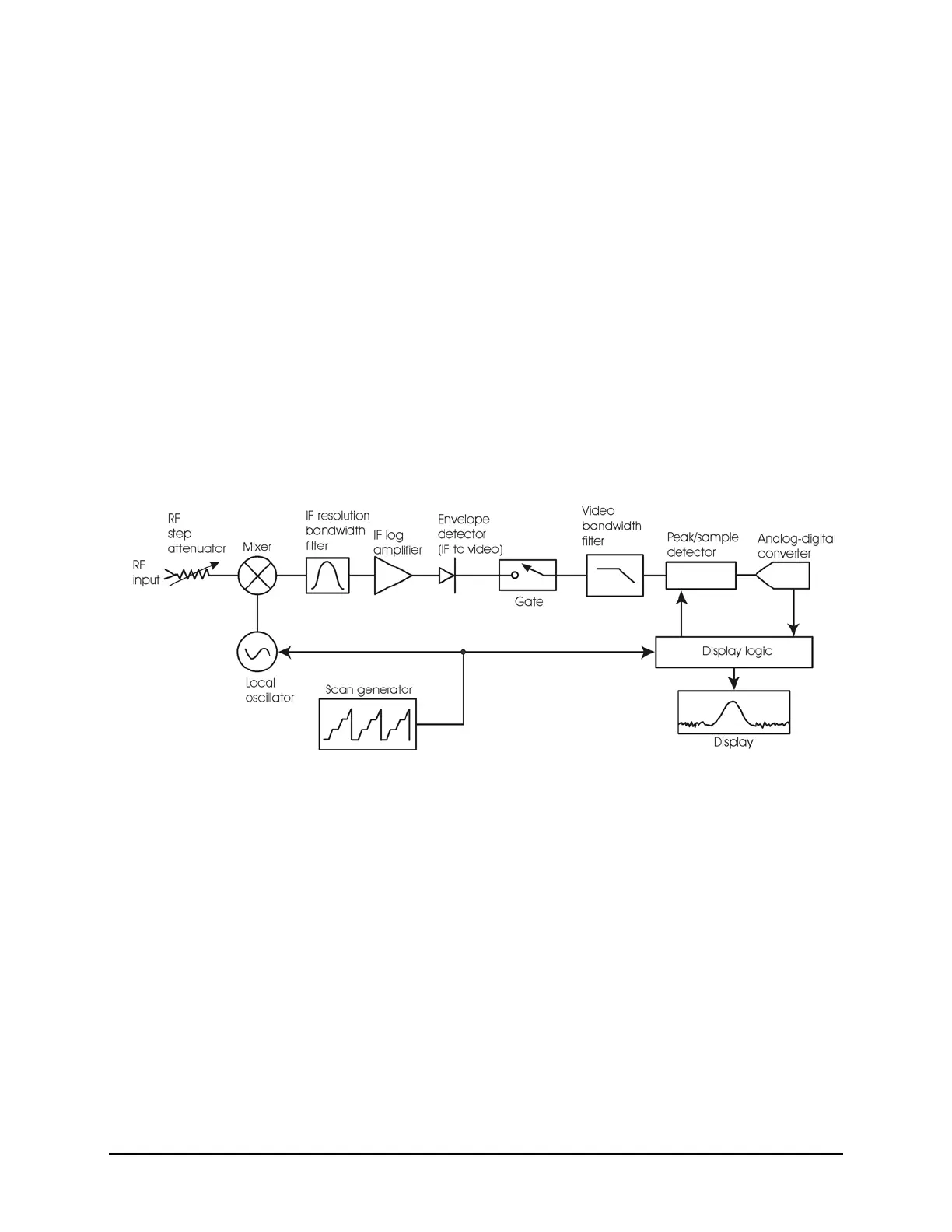